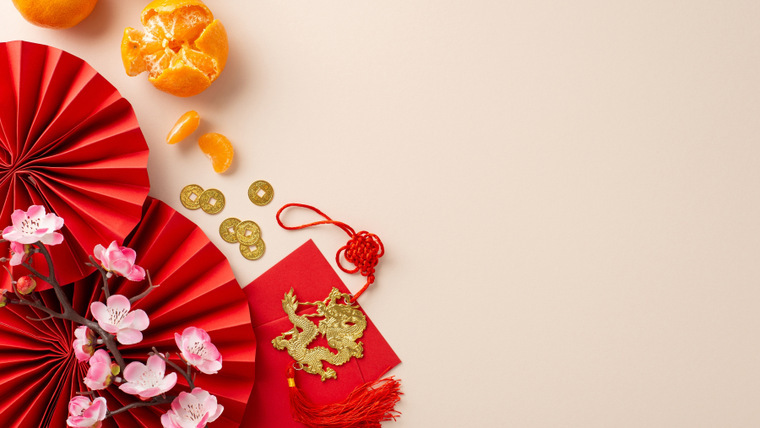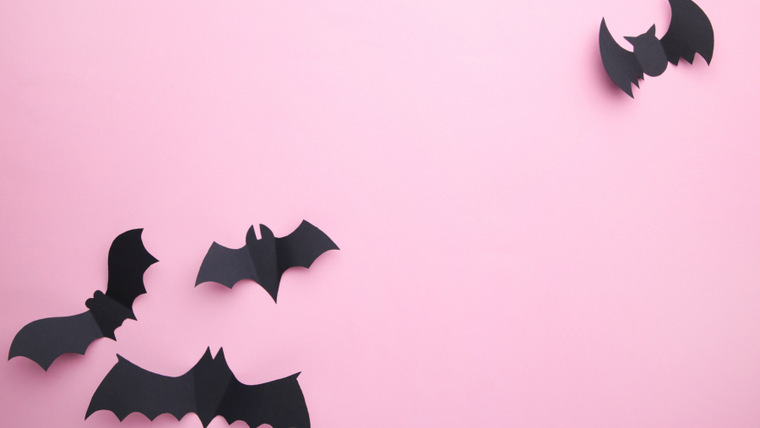Have you ever thought about why some stores seem to pull customers in like magnets while others struggle to get noticed? It’s all about color psychology and the use of colors in advertising. Understanding this theory can help you transform your store into a vibrant, irresistible haven for shoppers.
In this blog, we’ll break down the basics of color psychology and share some visual merchandising strategies to help you create stunning displays that attract your audience. Let’s start!
What is color psychology?
Color psychology explores how colors impact human behavior and emotions, influencing mood and decision-making. These associations vary across individuals and cultures.
In marketing, color affects how buyers perceive brands and products. The use of color in advertising shapes consumers’ initial perceptions of their brand or product.
Every color is associated with different emotions. Here’s how:
Warm colors
In warm colors, we find shades of red, orange, and yellow. These hues radiate energy and activity, evoking generally positive feelings.
- Red: Symbolizing passion, love, and even danger, red can stir emotions deeply. It’s often associated with warnings and can even escalate physiological responses like increased heart rate.
- Orange: With its vibrant energy, orange brings to mind autumn leaves and transitions. It’s a color of change, albeit less strongly associated with warnings compared to red.
- Yellow: Known as the happiest color, yellow exudes sunshine and hope. Despite its cheerful connotations, it can also carry undertones of caution or cowardice.
Cool colors
On the cooler side of the spectrum, we see blue, green, and purple. These colors tend to induce calmness and relaxation.
- Blue: Often linked with calmness and trustworthiness, blue is a popular choice for corporate branding. However, it can also evoke feelings of sadness or loss, depending on the context.
- Green: Symbolizing growth and nature, green indicates new beginnings. It combines the energizing properties of yellow with the calming effects of blue.
- Purple: Long associated with luxury and mystery, purple exudes a sense of royalty. Lighter shades like lavender evoke romance and the freshness of spring.
Neutrals
Neutral colors like black, white, gray, brown, and beige serve as versatile canvases, adapting to surrounding hues.
- Black: Elegant yet somber, black represents sophistication but can also signify mourning and sadness.
- White: Symbolizing purity and cleanliness, white offers a blank canvas for design. In some cultures, it’s also associated with death.
- Gray: Flexible and powerful, gray can convey sophistication or boredom depending on its usage. It’s a neutral canvas that adapts to both warm and cool tones, offering versatility in design.
- Brown: Solid and dependable, brown is often associated with nature and earthiness.
- Beige: Conservative and adaptable, beige takes on the warmth of brown or the coolness of white depending on its surroundings. It serves as a subtle backdrop, adding little psychological influence on its own.
According to Verywellmind, here are the symbolic meanings that are often associated with various colors in marketing color psychology:
- Red: Passion, excitement, love
- Pink: Soft, reserved, earthy
- Purple: Mysterious, noble, glamorous
- Blue: Wisdom, hope, reason, peace
- Green: Nature, growth, freshness
- Yellow: Hope, joy, danger
- Orange: Warmth, kindness, joy
- White: Truth, indifference
- Black: Noble, mysterious, cold
How to apply color theory in retail visual merchandising
Here are a few visual merchandising ideas to help you incorporate color theory into your retail marketing!
1. Use seasonal color themes
Rotate your store’s color palette to reflect seasonal trends or holidays. This retail visual merchandising strategy can breathe new life into your store and attract customers throughout the year.
For example, when autumn leaves begin to turn golden and the air becomes crisp, you can swap out the bright, summery hues in your store for warm, inviting tones like deep oranges, rich browns, and rustic reds. This way, your storefront can give cozy and warm vibes, drawing more customers in.
Fast forward a few months to springtime when flowers bloom and the world awakens from its winter slumber, you can refresh your store with bright, refreshing colors that mirror the season’s energy. Pastel pinks, soft blues, and vibrant greens evoke feelings of renewal and optimism. This will make your store feel like a breath of fresh air amidst the hustle and bustle of the changing seasons, enticing customers to explore what’s new and exciting.

2. Strategically place products
Color theory isn’t just for art class – it’s a powerful tool for boosting sales in your retail store! You can create focal points that naturally attract customers’ attention by strategically placing eye-catching products in your store and using contrasting colors to make them pop.
For example, if you’re running a promotion on a new line of green dresses, consider placing them near the entrance in a display with complementary colors like red or purple. This draws attention to the promotion and guides customers through your store, increasing the chances that they’ll make a purchase.
With a little creativity and know-how, you can use color theory to transform your retail space into a vibrant, inviting destination that keeps customers coming back for more.
3. Use colorful signage and branding
Once you’ve chosen your colors, it’s time to weave them into every aspect of your branding, from your logo to your store signage to your promotional materials. Imagine walking into a store where everything—from the logo above the door to the posters on the walls—is bathed in a harmonious palette of colors that perfectly reflect the brand’s personality. This careful attention to detail is key in executing effective visual merchandising ideas.
It’s like diving into a world that customers won’t forget. Your store becomes unforgettable, sticking in their minds. So, use colors wisely and see your store turn into a place full of personality and style.
PosterMyWall offers many templates for discount banner stands tailored to various themes and color schemes. You can edit these templates as per your liking. Just choose the right colors to enhance your message and resonate with your target audience. Use vibrant, energetic colors like yellow or orange to convey excitement, or opt for elegant, sophisticated tones like black or deep purple to evoke a sense of prestige.
4. Create a feature wall
Imagine this: visual merchandising ideas coming to life when customers step into a clothing boutique, and right in front of them is a wall painted in a bold shade of crimson red, perfectly complementing the store’s chic aesthetic. On this eye-catching wall, mannequins adorned in the latest arrivals strike poses, showcasing the hottest trends of the season. Instantly, their curiosity is piqued, and they’re drawn to explore what else this stylish store has to offer.
In essence, a highlight feature wall is like a friendly guide in your store, showing off the coolest stuff you’ve got. Whether it’s showcasing new arrivals, best-selling products, or seasonal promotions, the strategic use of color creates a focal point that captures attention and encourages exploration. It’s an opportunity to infuse your store with personality and style, making it memorable after customers leave.

5. Focus on brand consistency
Consistency is key to building a strong brand identity, and color plays a crucial role in this process. By using the principles of color theory, you can create a cohesive and recognizable brand image throughout your stores.
Start by choosing a primary color scheme that reflects your brand’s personality and values. For example, a luxury brand might opt for elegant shades of black and gold, while a playful and vibrant brand might embrace bright, cheerful hues like red and yellow.
Once you’ve established your brand’s color palette, integrate these colors into every aspect of your store design, from signage to displays to packaging. For instance, you could use your brand’s primary colors for store signage, ensuring that your logo and messaging are easily identifiable to customers. Incorporate these colors into product displays and shelving units to create a consistent visual experience that reinforces your brand identity at every touchpoint.
PosterMyWall offers brand kits that are comprehensive design packages tailored to retail stores, providing a cohesive set of branded marketing materials. These kits typically include customizable templates for various marketing materials such as posters, flyers, social media graphics, business cards, and more.

6. Evoke specific emotions with color
Choosing the right colors for your store can change how people feel when they walk in. It’s like setting the vibe of a party – you want everyone to feel good and have a good time.
Imagine customers walking into a store with soft blue and green walls. These colors can make them feel relaxed and calm, almost like they’re stepping into a peaceful oasis. That’s because blues and greens are often associated with tranquility and nature. So, if you’re setting up a chill-out zone or fitting room, these colors could be perfect to help customers feel at ease while they try on clothes or take a breather from shopping.
On the flip side, if you want to pump up the energy and get people excited about shopping, you might go for bold reds or bright yellows in your main shopping areas. These colors can grab attention and create a sense of excitement. Think about how you feel when you see a flashy sign or a vibrant display – it’s hard not to be drawn in! So, by using energetic colors in your store, you can encourage impulse buys and keep customers engaged and eager to explore.

Incorporate color theory into your retail marketing
In conclusion, visual merchandising ideas are essential in retail marketing as colors serve as powerful influencers of customer perceptions, emotions, and behaviors. Incorporating color theory into various aspects of visual merchandising, from store layouts to signage and branding, can help you create immersive shopping experiences that resonate with your target audience and drive foot traffic.
However, mastering color psychology and implementing it effectively can be a daunting task for many retailers. That’s where tools like PosterMyWall come in. With PosterMyWall’s wide range of retail marketing templates, you can streamline the entire process of creating eye-catching signage, promotional materials, and online advertisements. From customizable posters and banners to social media graphics and digital signage, PosterMyWall offers intuitive design tools and professionally designed templates that make it easy to use the power of color in retail marketing.
Hira is a Content Writer at PosterMyWall. Hira enjoys writing, so she looks forward to exploring different niches. When she’s not writing, she’s either on a trip making new friends, jotting down her thoughts, or just spending quality time with her two cats, Rio and Dusty!









